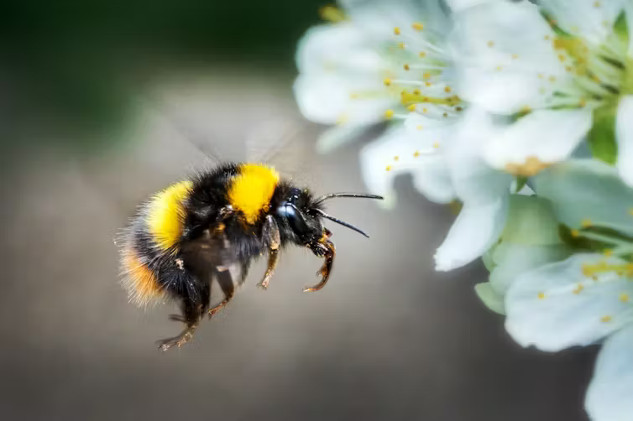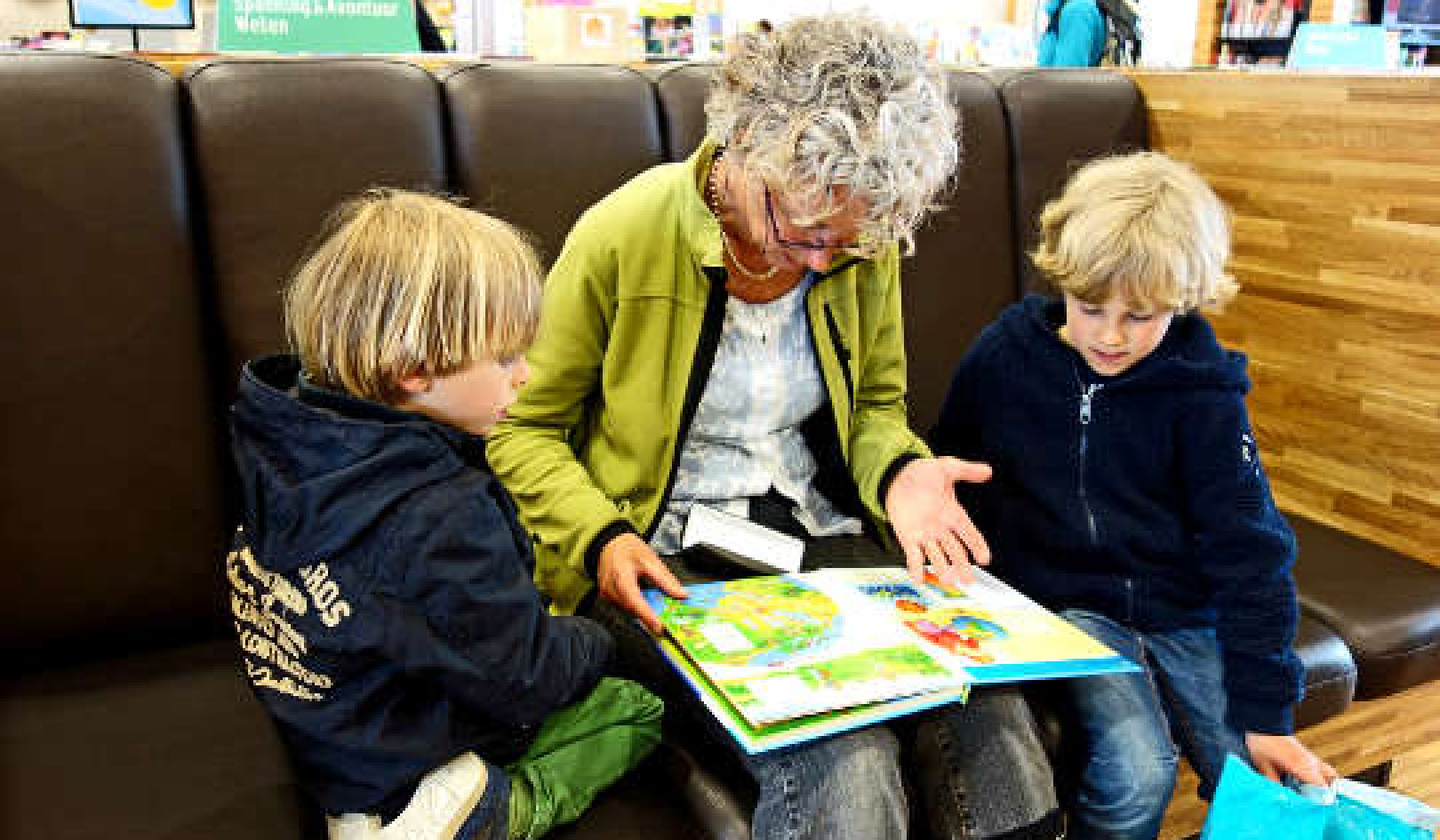Wild bees pollinate the crops and wild plants that feed us and sustain entire ecosystems, but many of the world’s 20,000 bee species are in decline. Loss of habitat is chiefly to blame, especially the loss of plants that provide pollen and nectar for bees to feed themselves and their brood (their eggs, larvae and pupae).
Falling numbers of bees and other insect pollinators have prompted governments to respond. In the UK, Europe and US, “pollinator planting” initiatives have taken root, yet species continue to decline. At least part of the problem seems to be that these schemes, which offer guidance to farmers, gardeners and landowners, recommend planting flowers to feed bees that start blooming much too late.
In a new study, we modelled the quantity of food available to bees in a computer simulation of a real farm. We found that the plant species recommended for pollinator planting in national initiatives tend to flower up to a month too late for the bees that emerge in the early spring – that’s right now, in March and April.
This “hungry gap” means fewer bee colonies survive to the end of the summer and not enough new queens are produced for the following year. The good news is that expanding these schemes to include plants that bloom very early in the spring could throw a lifeline to struggling bees.
Why is the early spring so important?
We wanted to find out when, during a typical season, limited food most threatens the fitness of bumblebees and which plant species are most helpful for remedying this. Our computer model simulations included multiple colonies of the buff-tailed bumblebee (Bombus terrestris) and the common carder bee (Bombus pascuorum), two UK species which emerge in spring.
The computer model simulates the life cycle of bumblebees. In it, digital bees explore a realistic landscape, collecting nectar and pollen, forming colonies and caring for their brood. At the end of a season, males and daughter queens are produced, and over a number of years the population may prosper or decline.
The landscape of a real farm was digitised to make the simulation, and the different areas (hedgerows, meadows, paddocks) marked in a digital map. We could adjust the variety of flowering plants in these areas for different test runs.
Adding plant species to the model that flower between March and April, like ground ivy, red dead-nettle, maple, cherry, hawthorn or willow, improved the survival rate of these bee populations from 35% to 100% over ten years. This meant that all colonies of both species survived each year a decade after these early flowering plants had been introduced.
These plants can fit into existing hedgerows without reducing the area used for crop production, ensuring farmers can continue to grow food and make a living while nourishing pollinators.
We were surprised to find that the bee colony’s demand for nectar and pollen at the start of the spring was driven mainly by the number of larvae rather than the number of adult workers. But if we look at the life cycle of a typical social bee colony, this finding makes sense.
In the spring, a queen emerges from hibernation, finds a suitable nest site, collects nectar and pollen and raises a first generation of brood. This founding stage of the colony is followed by the social phase, when enough pupae have matured into adult workers that they can take over foraging and brood care for the colony. The founding stage can last several weeks, and during this time, there are very few adult bees foraging to meet the needs of a large number of brood. This explains why, for our spring-emerging species, we observed high food demand in March and April, before we normally see large numbers of adult worker bees foraging outside the colony.
Filling the hungry gap
Some bee species emerge in the early spring and some emerge later; in the northern hemisphere, a species can emerge any time between March and July. Across Europe and North America there are plenty of early-spring bees which appear at the beginning of this range. In fact, somewhere between a third and a quarter of bee species in temperate regions may appear around the start of spring.
But government guidance in the UK and the EU misses this critical March-April hungry gap. EU guidance is to allow wild plants to flower during the summer, when most pollinators are on the wing, by cutting grass or grazing in early spring and autumn. In the US, land managers are encouraged (depending on the state) to plant a minimum of three species that bloom between April and June 15. These recommendations overlook the need for early spring forage.
Our critical finding is that bees need flowers for food up to a month before we even see the adults flying around. If different species of bee are active from April through October, then we need flowers blooming from March onward.
Providing flowers across the whole season, with an emphasis on early spring flowers, would make pro-pollinator schemes more effective. To supplement the “No Mow May” campaign, we need a “plant early spring flowers” drive. Or even better: make sure you have flowers blooming every month from March through October.
Tonya Lander, Stipendiary Lecturer in Biology, University of Oxford and Matthias Becher, Affiliate, Environment and Sustainability Institute, University of Exeter
This article is republished from The Conversation under a Creative Commons license. Read the original article.
Books on The Environment from Amazon's Best Sellers list
"Silent Spring"
by Rachel Carson
This classic book is a landmark in the history of environmentalism, drawing attention to the harmful effects of pesticides and their impact on the natural world. Carson's work helped to inspire the modern environmental movement and remains relevant today, as we continue to grapple with the challenges of environmental health.
Click for more info or to order
"The Uninhabitable Earth: Life After Warming"
by David Wallace-Wells
In this book, David Wallace-Wells offers a stark warning about the devastating effects of climate change and the urgent need to address this global crisis. The book draws on scientific research and real-world examples to provide a sobering look at the future we face if we fail to take action.
Click for more info or to order
"The Hidden Life of Trees: What They Feel, How They Communicate?Discoveries from A Secret World"
by Peter Wohlleben
In this book, Peter Wohlleben explores the fascinating world of trees and their role in the ecosystem. The book draws on scientific research and Wohlleben's own experiences as a forester to offer insights into the complex ways that trees interact with one another and the natural world.
Click for more info or to order
"Our House Is on Fire: Scenes of a Family and a Planet in Crisis"
by Greta Thunberg, Svante Thunberg, and Malena Ernman
In this book, climate activist Greta Thunberg and her family offer a personal account of their journey to raise awareness about the urgent need to address climate change. The book provides a powerful and moving account of the challenges we face and the need for action.
Click for more info or to order
"The Sixth Extinction: An Unnatural History"
by Elizabeth Kolbert
In this book, Elizabeth Kolbert explores the ongoing mass extinction of species caused by human activity, drawing on scientific research and real-world examples to provide a sobering look at the impact of human activity on the natural world. The book offers a compelling call to action to protect the diversity of life on Earth.























